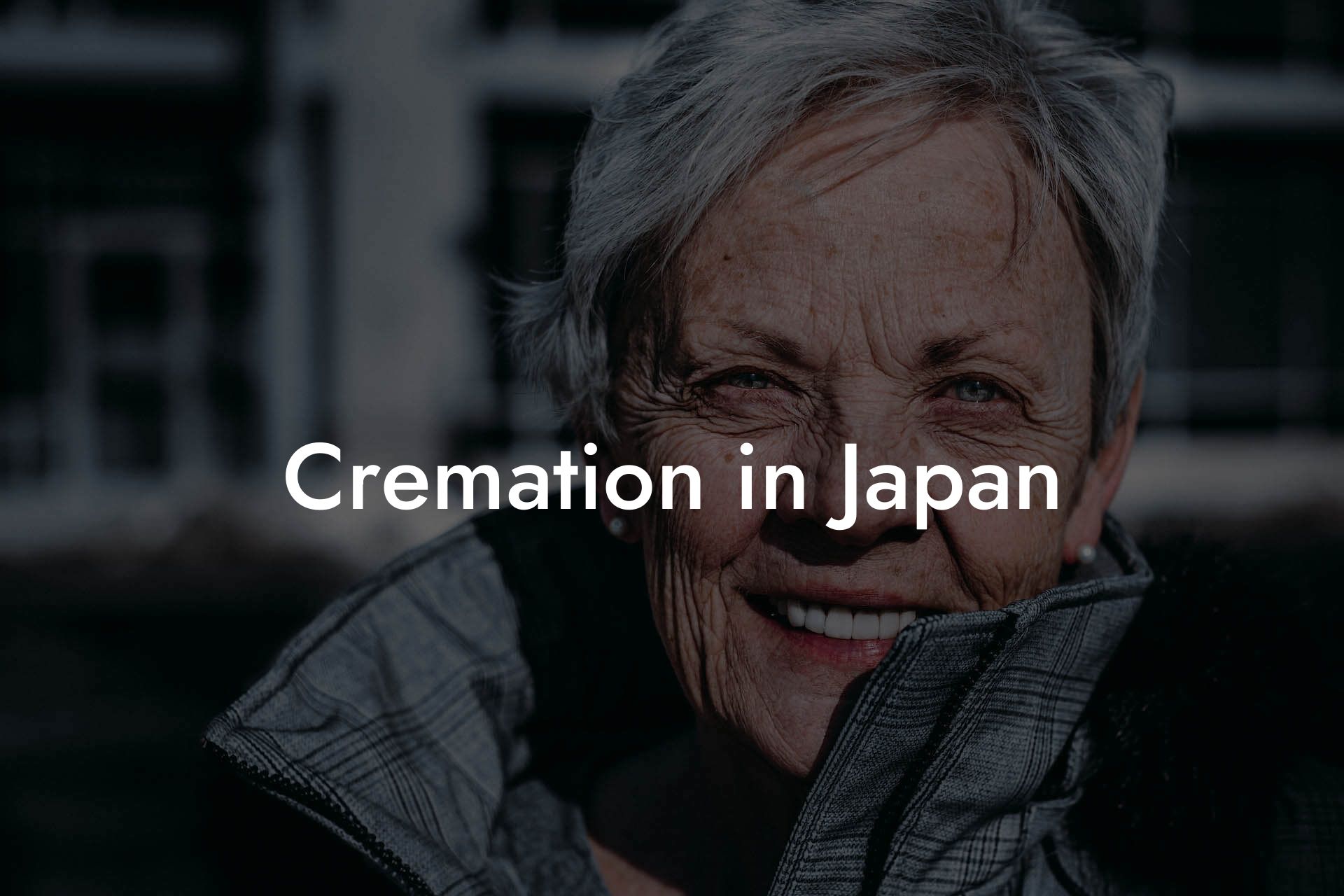Imagine a world where the traditional funeral rites of your ancestors meet the modern, eco-friendly sensibilities of today. Welcome to the fascinating realm of cremation in Japan, where ancient customs blend seamlessly with cutting-edge technology to create a unique and captivating funeral experience.
Quick Links to Useful Sections
A Brief History of Cremation in Japan
Cremation has a long and storied history in Japan, dating back to the 8th century. Initially, it was a practice reserved for the elite classes, but by the 19th century, it had become more widespread. Today, Japan boasts one of the highest cremation rates in the world, with over 99% of the population opting for this method of body disposal.
The rise of cremation in Japan can be attributed to a combination of factors, including the country's limited land availability, cultural shifts towards a more modern and secular society, and the influence of Buddhism, which emphasizes the impermanence of the physical body.
The Cremation Process in Japan
The cremation process in Japan is a meticulous and dignified affair, steeped in tradition and ritual. Here's an overview of what you can expect:
- Pre-cremation rites: The deceased is washed, dressed, and placed in a coffin, which is then adorned with flowers and other offerings.
- Cremation: The coffin is placed in a cremation chamber, where it is exposed to high temperatures (typically between 1400°C to 1800°C) for around 1-2 hours.
- Bone collection: After cremation, the remaining bones are collected and placed in a special urn, which is then given to the family.
- Burial or scattering: The urn is either buried in a cemetery or the ashes are scattered in a designated area, such as a sea or mountain.
The entire process is typically overseen by a licensed funeral director, who ensures that all rituals and customs are observed with the utmost respect and dignity.
Modern Cremation Facilities in Japan
Japan is at the forefront of cremation technology, with many modern facilities that prioritize efficiency, sustainability, and dignity. Some of the features you might find in a modern Japanese crematorium include:
- High-tech cremation chambers: These chambers use advanced filtration systems to minimize environmental impact and ensure a clean, smoke-free cremation process.
- Eco-friendly options: Many facilities offer eco-friendly cremation options, such as bio-cremation, which uses water instead of flames to reduce the body to ashes.
- Family viewing areas: Some crematoriums have designated areas where families can observe the cremation process, providing a sense of closure and connection.
These modern facilities not only ensure a dignified farewell but also contribute to a more sustainable future for generations to come.
Cultural Significance of Cremation in Japan
Cremation plays a significant role in Japanese culture, transcending mere practicality to become an integral part of the country's spiritual and philosophical fabric. Here are some interesting aspects of cremation's cultural significance:
- Buddhist influence: Buddhism's emphasis on the impermanence of the physical body has contributed to cremation's widespread acceptance in Japan.
- Ancestor worship: Cremation allows families to honor their ancestors by keeping their ashes in a designated area, such as a family altar or grave.
- Environmental awareness: Japan's limited land availability has led to a growing awareness of the importance of eco-friendly funeral practices, with cremation being seen as a more sustainable option.
By understanding the cultural context of cremation in Japan, we can gain a deeper appreciation for the country's unique funeral traditions and the values they represent.
Integrating Cremation into Modern Japanese Society
As Japan's population ages and urbanization increases, the funeral industry is adapting to meet the changing needs of modern society. Here are some ways cremation is being integrated into contemporary Japanese life:
- Online funeral platforms: Online platforms are emerging, allowing families to arrange funerals and cremations digitally, making the process more convenient and accessible.
- Sustainable funeral options: Eco-friendly funeral options, such as tree burial and sea scattering, are gaining popularity, appealing to those who prioritize environmental sustainability.
- Death cafes: Death cafes, where people gather to discuss death and mortality, are becoming increasingly popular, helping to break down taboos surrounding death and funeral practices.
By embracing innovation and cultural evolution, Japan is redefining the role of cremation in modern society, ensuring that this ancient practice remains relevant and meaningful for generations to come.
Resources and Community Support: Your Next Steps
If you're interested in learning more about cremation in Japan or seeking support for a loved one, here are some resources to consider:
- Japanese Funeral Association: A professional organization that provides information on funeral practices and cremation in Japan.
- Death cafes: Attend a death cafe to engage in open discussions about death and funeral practices.
- Online forums and support groups: Join online communities to connect with others who have experienced loss or are interested in cremation and funeral practices.
Remember, understanding and embracing cremation in Japan is not only a fascinating cultural exploration but also a powerful way to connect with others and find meaning in the face of mortality.
Frequently Asked Questions about Cremation in Japan
Here are some frequently asked questions about cremation in Japan:
1. What is the cremation rate in Japan?
Over 99% of the Japanese population opts for cremation.
2. How long does the cremation process take in Japan?
The cremation process typically takes around 1-2 hours.
3. Are there any eco-friendly cremation options in Japan?
Yes, many modern crematoriums in Japan offer eco-friendly options, such as bio-cremation.
4. Can I scatter ashes in Japan?
Yes, ash scattering is a common practice in Japan, often done in designated areas such as mountains or seas.
5. How do Japanese funerals typically work?
Japanese funerals typically involve a wake, cremation, and a burial or scattering of ashes, with many rituals and customs observed throughout the process.

